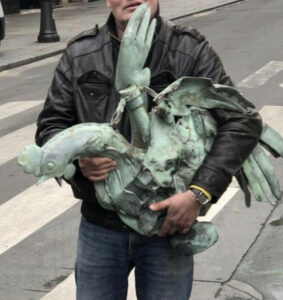THE ROOSTER, AN EMBLEM OF FRANCE
The rooster is one of the allegorical symbols and emblems of France.
This rooster/France association is the result of a play on words: the Latin word "Gallus" means both "Gallic" and "rooster".
Although attempts were made to make it the symbol of France in late medieval times, it wasn't until the Renaissance that the cock began to symbolize the king of France, and later his kingdom.
In the 16th century, French tradition dictated that Henri IV, King of France, instituted and democratized the poule au pot as a "national dish" , becoming, along with coq au vin, one of the emblems of French cuisine.
The rooster gained particular popularity during the French Revolution and the July Monarchy, when it was introduced to replace the dynastic lily.
One of the world's best-known roosters:
The Miraculous Rooster of Notre Dame

Some are even calling it a miracle: the bronze cockerel that stood at 90 meters atop Viollet-le-Duc's neo-Gothic spire was thought to have been lost forever in the fire, but has now resurfaced.
Found dented but intact despite the violence of the blaze and the height of the fall, it quickly became a symbol of hope at the heart of this spring's heritage drama.
Reputed to contain three precious relics, including a thorn from Christ's crown - all of which, alas, have now disappeared - the rooster was not swept up in the collapse of the 19th-century spire. Instead, it was flung far away from the source of the fire, flying away thanks, no doubt, to the furcula... as if by a miracle.
To symbolize the passage from darkness to light, every church in France features a rooster. Indeed, the rooster is the first to crow at dawn, heralding the start of the new day.